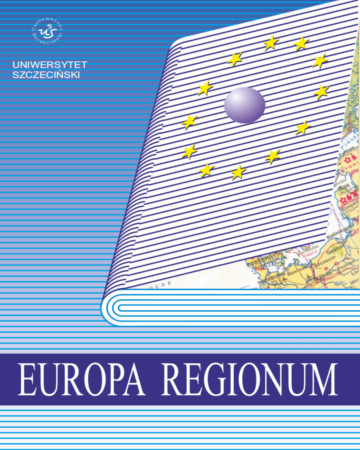
ISSN: 1428-278X
OAI
DOI: 10.18276/er.2018.34-03


Issue archive /
t. 34 2018
Wpływ gospodarki 4.0 na finanse przedsiębiorstwa
(Finance 4 .0 – What changes in corporate finance are introduced by the fourth industrial revolution)
| Authors: |
Michał
Ficenes
Uniwersytet Warszawski Wydział Zarządzania Katedra Systemów Finansowych Gospodarki Adam Szymko Uniwersytet Szczeciński Wydział Zarządzania i Ekonomiki Usług Katedra Bankowości i Finansów Porównawczych |
| Keywords: | Industry 4.0 Financial management Risk management Finance 4.0 Future finance Financial reporting |
| Data publikacji całości: | 2018 |
| Page range: | 13 (27-39) |
| Klasyfikacja JEL: | G32 |
Abstract
The goal of this article is to recognize challenges the industry 4.0 lays before the corporate management and members of financial markets, with particular consideration of financial management and risk management aspects. New technologies change business models of enterprises, simultaneously creating new opportunities to change the financial function. New categories and technologies like data science, machine learning, or artificial intelligence create new paradigm for financial management, which can be called finance 4.0. This paradigm will be reflected both in financial reporting and risk management, where new technologies create new challenges.
Download file
Article file
Bibliography
| 1. | Badertscher, B. (2011). Overvaluation and the choice of alternative earnings management |
| 2. | mechanisms. Accounting Review, 86 (5), 1491–1518. |
| 3. | Basel Committee (2013). Principles for effective risk data aggregation and risk reporting. |
| 4. | Bank for International Settlements. |
| 5. | Bergemann, D., Hege, U. (1998). Venture capital financing, moral hazard, and learning. |
| 6. | Journal of Banking and Finance, 22, 703–735. |
| 7. | Berzkalne, I., Zelgalve, E. (2014). Intellectual capital and company value. Procedia - Social |
| 8. | and Behavioral Sciences, 110, 887–896. |
| 9. | Central Intelligence Agency (2018). The World Factobook 2017. CIA. |
| 10. | Chakraborty, C., Joseph, A. (2017). Machine Learning at central banks. London. |
| 11. | de Villiers, C., Sharma, U. (2018). A critical reflection on the future of financial, intellectual |
| 12. | capital, sustainability and integrated reporting. Critical Perspectives on Accounting. |
| 13. | Edmans, A. (2011). Does the stock market fully value intagibles? Employee satisfaction and |
| 14. | equity prices. Journal of Financial Economics, 101, 621–640. |
| 15. | Financial Stability Board (2017). Artificial Intelligence and machine learning in financial |
| 16. | services. Market developments and financial stability implications. Financial Stability |
| 17. | Board. |
| 18. | Francis, J., Schipper, K., Vincent, L. (2003). The Relative and Incremental Explanatory Power |
| 19. | of Earnings and Alternative (to Earnings) Performance Measures for Returns. Contemporary |
| 20. | Accounting Research, 20 (1), 121–164. |
| 21. | Govindarajan, V., Rajgopal, S., Srivastava, A. (2018). Why We Need to Update Financial |
| 22. | Reporting for the Digital Era. Harvard Business Review, 8. |
| 23. | Huchzermeier, A., Loch, C. (2001). Project Management Under Risk: Using the Real Options |
| 24. | Approach to Evaluate Flexibility in R & D. Management Science, 47 (1), 85–101. |
| 25. | Hull, J. (2012). Zarządzanie ryzykiem instytucji finansowych. Warszawa: Wydawnictwo Naukowe |
| 26. | PWN. |
| 27. | Kolev, K., Marquardt, C., McVay, S.E. (2008). SEC scrutiny and the evolution of non-GAAP |
| 28. | reporting. Accounting Review, 83 (1), 157–184. |
| 29. | Lev, B., Zarowin, P. (1999). The Boundaries of Financial Reporting and How to Extend |
| 30. | Them. Journal of Accounting Research, 37 (2), 353–385. |
| 31. | McGrath, R.G., Nerkar, A. (2004). Real Options Reasoning and The New Look at The R & D |
| 32. | Investment Strategies of Pharmaceutical Firms. Strategic Management Journal, 25, |
| 33. | 1–21. |
| 34. | McKinsey. (2016). The Future of Bank Risk Management. McKinsey. |
| 35. | PwC (2016). Banki i fintech-y – małżeństwo z rozsądku. Warszawa: PwC. |
| 36. | Rooney, J., Dumay, J. (2016). Intellectual capital, calculability and qualculation. The British |
| 37. | Accounting Review, 48 (1), 1–16. |
| 38. | Samis, M., Davis, G., Laughton, D., Poulin, R. (2006). Valuing uncertain asset cash flows |
| 39. | when there are no options: A real options approach. Resources Policy, 30 (4), 285–298. |
| 40. | Taudes, A., Feurstein, M., Mild, A. (2000). Options Analysis of Software Plaform Decisions: |
| 41. | A Case Study. MIS Quarterly, 24 (2), 227–243. |
| 42. | Trigeorgis, L. (2002). Real Options and Investment Under Uncertainty: What do We Know? |
| 43. | Brussels: National Bank of Belgium. |
| 44. | van Aarle, R. (2013). A Real-Options approach to company valuation. Enschede: University |
| 45. | of Twente. |
| 46. | Venter, E., Emanuel, D., Cahan, S. (2014). The Value Relevance of Mandatory Non-GAAP |
| 47. | Earnings. Journal of Accounting, Finance and Business Studies, 50 (1), 1–24. |